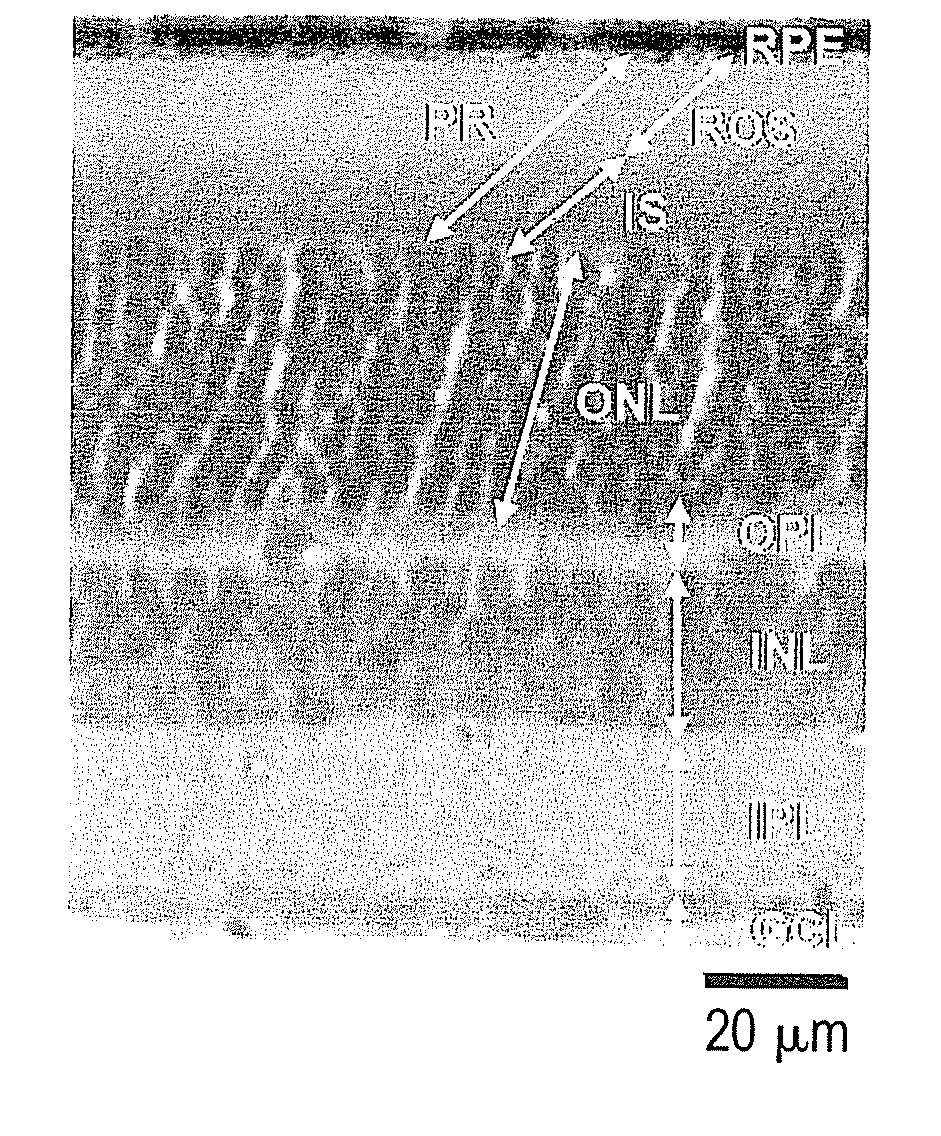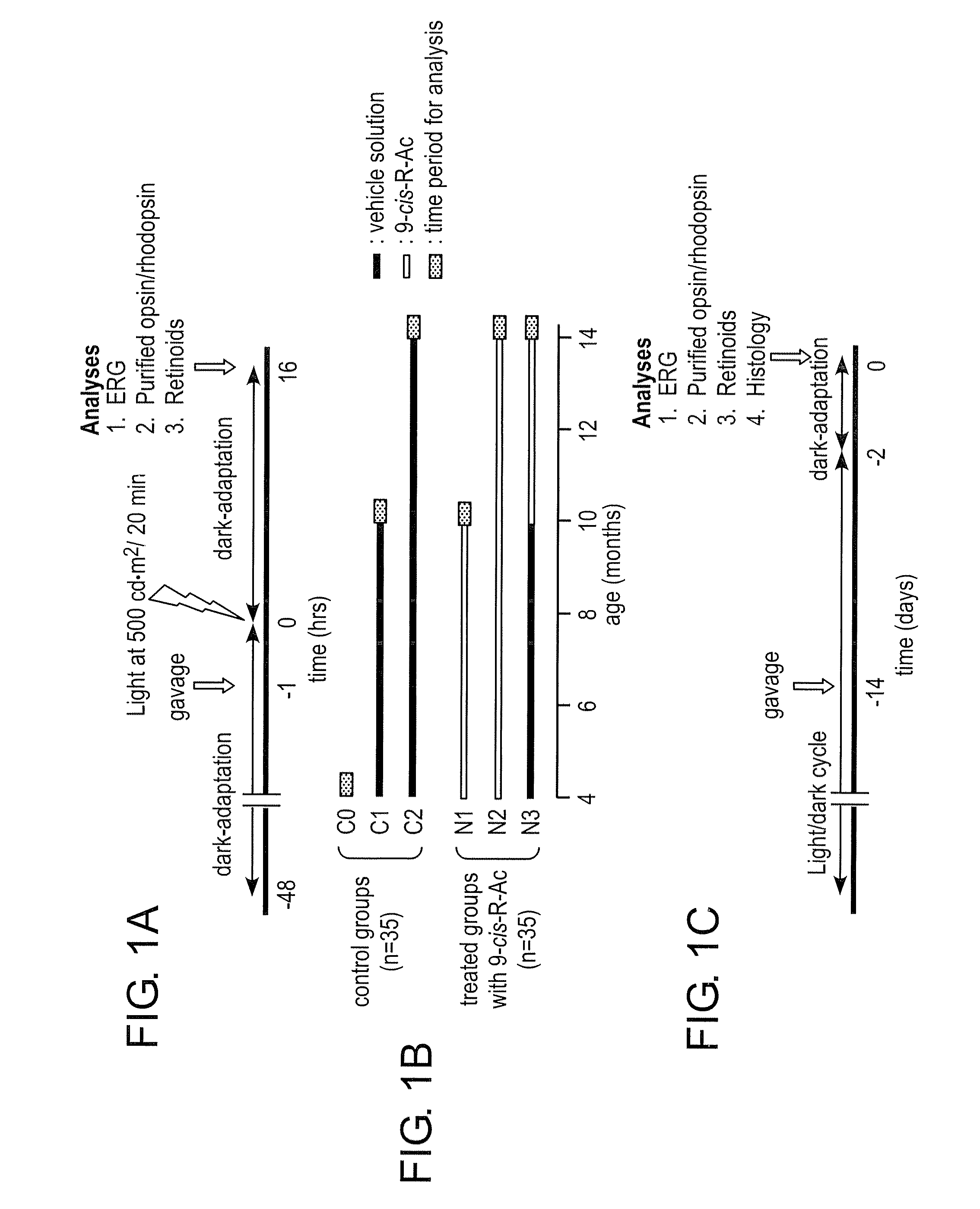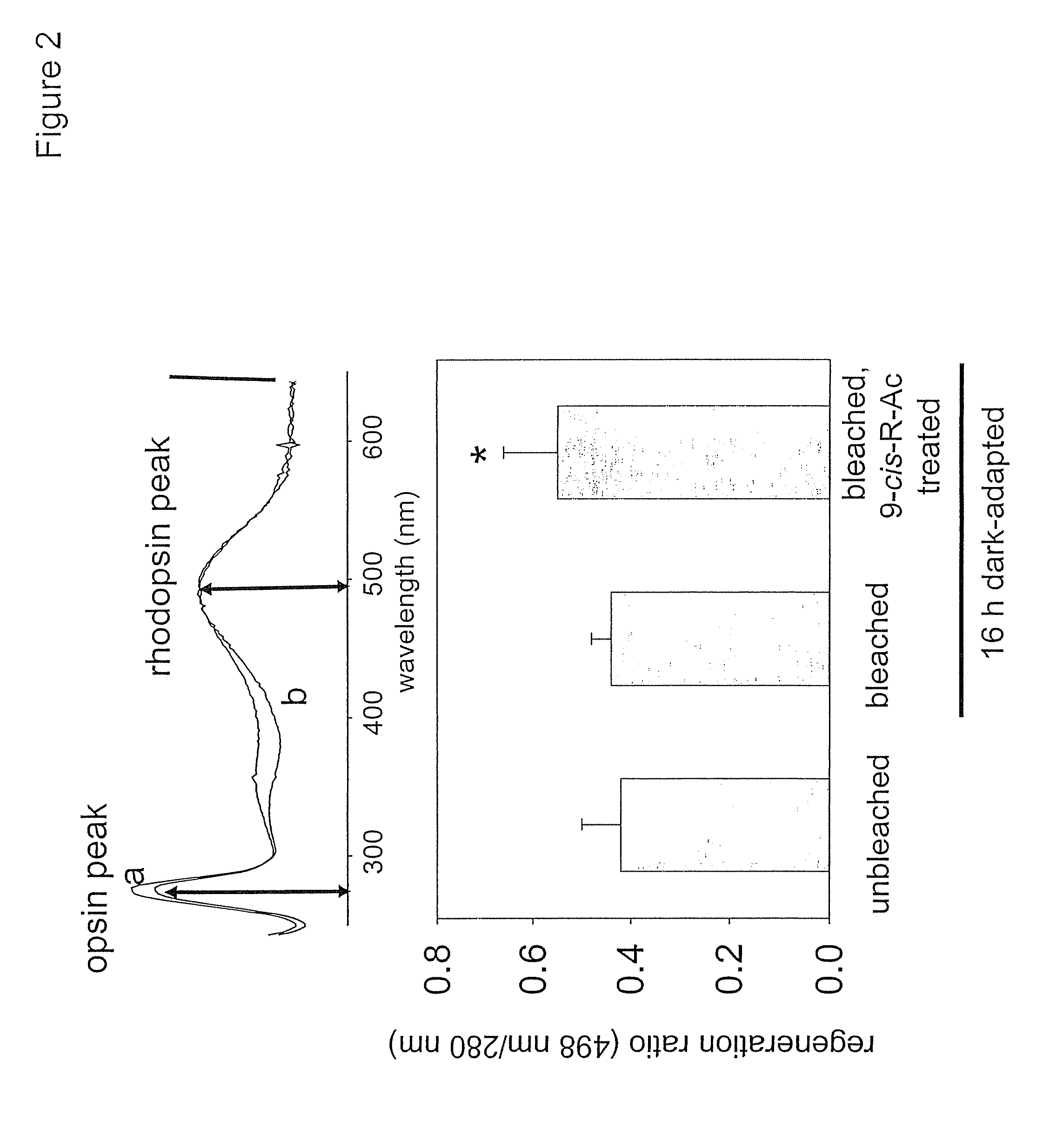Methods for the treatment and prevention of age-related retinal dysfunction
a retinal dysfunction and age-related technology, applied in the field of age-related retinal dysfunction treatment and prevention, can solve the problems of few treatments for retinoid deficiency, damage to the macula, and reduced visual acuity and even blindness, and achieve the effect of improving rhodopsin regeneratio
- Summary
- Abstract
- Description
- Claims
- Application Information
AI Technical Summary
Benefits of technology
Problems solved by technology
Method used
Image
Examples
example 1
Single dose treatment of C57BL / 6 female mice with 9-cis-R-Ac
[0089]Forty eight hr dark-adapted, 10-month-old mice were gavaged with a single dose (˜80 mg / kg body weight) of 9-cis-R-Ac or control vehicle and exposed to strong illumination for 20 min (500 cd·m−2 that bleached ˜90% rhodopsin). Next, mice were dark-adapted for 16 hr after which various analyses were performed (FIG. 1A). Single-flash ERG conducted on treated and untreated mice showed that functional a- and b-wave amplitudes of treated mice were slightly increased as compared with the amplitudes in control mice (a-waves, P<0.01; data not shown). To investigate whether 9-cis-retinal was utilized to form isorhodopsin and to assess how much unliganded opsin was present in the mouse eyes, rhodopsin, isorhodopsin and opsin were purified by immunoaffinity chromatography from treated and control groups of mice. The regeneration ratio of rhodopsin was calculated by the ratio of rhodopsin and isorhodopsin (absorbance at 498 nm) to ...
example 2
Long-term treatment of C57BL / 6 female mice with 9-cis-R-Ac
[0090]For the long-term studies (FIGS. 1B, and 1C), C57BL6 female mice were gavaged with 9-cis-R-Ac, all-trans-R-Ac or control vehicle monthly for 6 or 10 months.
example 3
Single flash ERG analyses
[0091]To evaluate the effects of rod- and cone-mediated light responses after long-term 9-cis-R-Ac treatments, mice were examined by non-invasive ERG methods. The first set of analyses was done at 4 and 10 months of age. Under scotopic conditions, the amplitudes of a-waves decreased with age, especially at high flash intensities (C1 versus C0 group, FIG. 4A, left top panel), whereas the changes in b-waves were less evident (FIG. 4A, right top panel). Under photopic conditions, no differences were observed for either a- or b-waves (FIG. 4A, lower panels). When treated and untreated groups were compared (N1 versus C1) slight improvement was observed for the N1 group with respect to a- or b-waves at high flash strengths (p<0.01, one-way ANOVA) under both photopic and scotopic conditions with the exception of a-waves under photopic conditions (FIG. 4A, left lower panels).
[0092]The second set of analyses was done at 14 months of age. No significant differences we...
PUM
| Property | Measurement | Unit |
|---|---|---|
| time | aaaaa | aaaaa |
| wavelengths | aaaaa | aaaaa |
| pH | aaaaa | aaaaa |
Abstract
Description
Claims
Application Information
 Login to View More
Login to View More - R&D
- Intellectual Property
- Life Sciences
- Materials
- Tech Scout
- Unparalleled Data Quality
- Higher Quality Content
- 60% Fewer Hallucinations
Browse by: Latest US Patents, China's latest patents, Technical Efficacy Thesaurus, Application Domain, Technology Topic, Popular Technical Reports.
© 2025 PatSnap. All rights reserved.Legal|Privacy policy|Modern Slavery Act Transparency Statement|Sitemap|About US| Contact US: help@patsnap.com



